Article by George Booker
Photography by Joshua Fitzwater and Matt Wade
John Knepper is a kind husband with a small farm and a Shenandoah property where he finds a divine serenity. By profession he’s an electrical contractor, which brought him to Broadway, Virginia some forty years ago. By service he’s a Lion.

Broadway Lions Pitmaster John Knepper begins a large Shenandoah Valley barbecue chicken cook in Broadway, Virginia
Unlike Manhattan’s Great White Way, Virginia’s Broadway is a small community just north of Harrisonburg. Already a Jaycee when he moved to Broadway, Knepper continued his active involvement in service organizations by joining the town’s branch of the Lions Club. Maybe the service and fellowship were primary reasons for joining the Lions, but Knepper soon found some formidable culinary perks to the organization.
One of the most impressive structures in Broadway is a barbecue pit. It is not uncommon on a Saturday morning for the Lions or for other organizations to move a thousand half chickens. Knepper didn’t grow up on this.
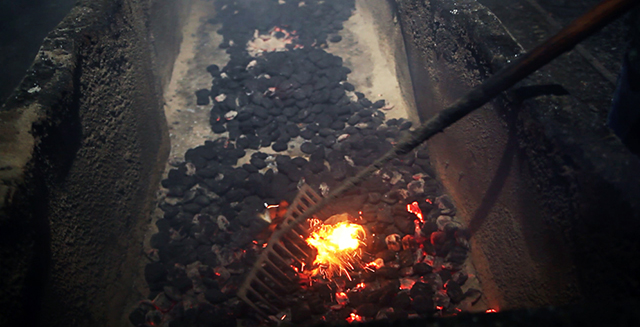
Concrete barbecue pit in Broadway Virginia
In Williamsburg (once again, Virginia not New York), he was more likely to come across a whole hog barbecue than such a bulk chicken cook. Still, when his Lions were doing one of their multiple yearly cooks, he didn’t hesitate to lend a hand. Surely it was a delicious way to serve his community.
Over years of watching and learning on the (volunteer) job, Knepper has worked his way up to being pitmaster for the Broadway Lions. Though exceedingly humble, one can hear Knepper’s pride, passion, and expertise for this regional style of barbecue.
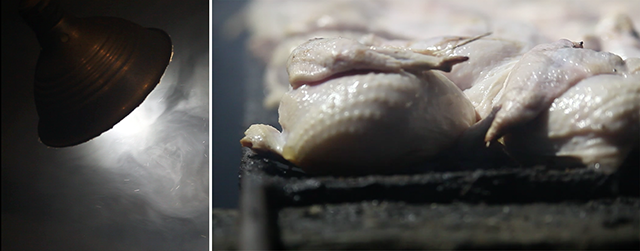
Chicken goes on before the sun is up in Broadway Virginia
Shenandoah Valley barbecue chicken dates back to around the early 1900s. These large community cooks are an institution in the area due to the valley’s large poultry industry. While the impetus for these cooks has changed very little over time, techniques are tweaked and recipes are refined.
Starting in the late 1950s in Montezuma, Virginia, a pitmaster and farmer, Dave Shirkey, would come to define the taste of Shenandoah Valley barbecue chicken. He did so through well received large cooks that he put on throughout his life and featured his highly prized famous basting sauce, which he generously made available to the public. The influence of Shirkey’s hard work and attention to flavor is not lost on Knepper and the Lions.

Pitmaster Knepper checking the Shenandoah Valley barbecue chicken before another flip
Knepper will get to the pit around 4:30 a.m. to fire up the coals and stock the racks. There is room for 960 half chickens. They can often squeeze in an extra 40. Though the chicken takes 2 ½ to 3 hours, it is not a passive process. The Lions keep the chicken turning and basting frequently to avoid burning or drying, and the chicken is done when it is a lovely brown and a wing peels right off the breast.

Shenandoah Valley barbecue chicken by the Broadway Lions
The images of a cook before dawn are striking and cinematic. Glowing embers illuminate white smoke through sunless dark. It is clear why this is worth getting up very early or staying up very late for.

Lions member and sauce maker Churchill Blakey
The baste, also called the mop or sauce, is a key component that sets each crew’s chicken apart from others. Dan Fraser and Churchill Blakey oversee the delectable liquid for the Broadway Lions. They employ a vinegar base not unlike the roasts of the 1950s and 1960s, emphasizing fresh and quality local ingredients and spices.
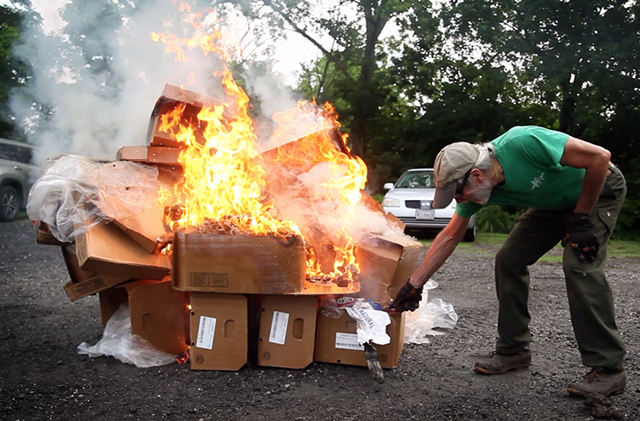
Lions member and sauce maker Dan Fraser
Knepper himself is prone to deflect personal credit. He goes out of his way to emphasize that this is a group effort that would not be possible without the many hands that make it happen. The Lions themselves are only one of many organizations holding the events throughout the region.
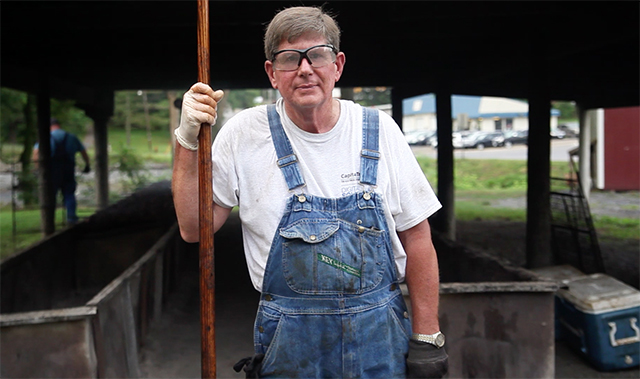
Pitmaster John Knepper post cook
The region certainly supports this local specialty. Although the Lions don’t start selling until 8:15 in the morning, vehicles arrive more than an hour beforehand, and a sizable line awaits when they do open. A drive-through service at a nearby school was originally created to adjust to the pandemic, but it has turned out to be a more efficient way to keep chicken moving, rather than clogging the lot at the pit itself.
Inevitably the Lions sell out before lunchtime. Hundreds are fed, and local charities and services are supported. It’s an awfully tasty way to help.
For more on the Broadway Lions, visit them online HERE





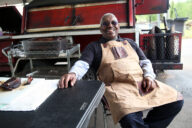

No Comments